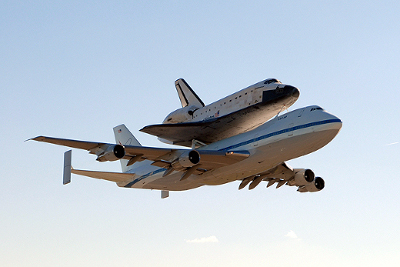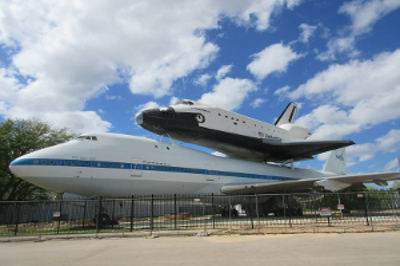Cool pictures of the space shuttle

The Space Shuttle Endeavour returns to the Kennedy Space Center December 12 on top of one of NASA's two 747 Shuttle Carrier Aircraft.

The eight-story complex, called Independence Plaza, is slated to open on January 23, 2016, and will feature a shuttle replica and its carrier aircraft, as well as numerous programs and exhibits.

The flight deck of the space shuttle give us insight into just how complex is to operate a vehicle that travels in space.
The Lyndon B. Johnson Space Center (JSC) is the National Aeronautics and Space Administration's Manned Spacecraft Center, where human spaceflight training, research, and flight control are conducted. It was renamed in honor of the late U.S. president and Texas native, Lyndon B. Johnson, by an act of the United States Senate on February 19, 1973.
It consists of a complex of one hundred buildings constructed on 1,620 acres (660 hectares) in the Clear Lake Area of Houston which acquired the official nickname "Space City" in 1967. The center is home to NASA's astronaut corps and is responsible for training astronauts from both the U.S. and its international partners. It has become popularly known for its flight control function, identified as "Mission Control" during the Gemini, Apollo, Skylab, Apollo−Soyuz, and Space Shuttle program flights.
Mission Control Center
In 1961, as plans for Project Gemini began, it became increasingly clear that the Mercury Control Center located at the Cape Canaveral Air Force Station launch center would become inadequate to control missions with maneuverable spacecraft such as Gemini and Apollo.
The new built center had two Mission Operations Control Rooms, allowing training and preparation for a later mission to be carried out while a live mission is in progress.
View more
Appolo program
In addition to housing NASA's astronaut operations, JSC is also the site of the former Lunar Receiving Laboratory, where the first astronauts returning from the Moon were quarantined, and where the majority of lunar samples are stored. The center's Landing and Recovery Division operated MV Retriever in the Gulf of Mexico for Gemini and Apollo astronauts to practice water egress after splashdown.
View more
Space Shuttle program
Since 1981, NASA space shuttles have been rocketing from the Florida coast into Earth orbit. The five orbiters −Columbia, Challenger, Discovery, Atlantis and Endeavour −have flown more than 130 times, carrying over 350 people into space and travelling more than half a billion miles, more than enough to reach Jupiter. Designed to return to Earth and land like a giant glider, the shuttle was the world's first reusable space vehicle. More than all of that, though, the shuttle program expanded the limits of human achievement and broadened our understanding of our world.
View more
Training and research
NASA's astronaut training is conducted at the Johnson Space Center. Astronaut candidates receive training on shuttle systems and in the basic sciences which include mathematics, guidance and navigation, oceanography, orbital dynamics, astronomy, and physics.[27] Candidates are required to complete military water survival prior to beginning their flying instruction. Candidates are also required to become SCUBA qualified for extravehicular training and are required to pass a swimming test
View more




